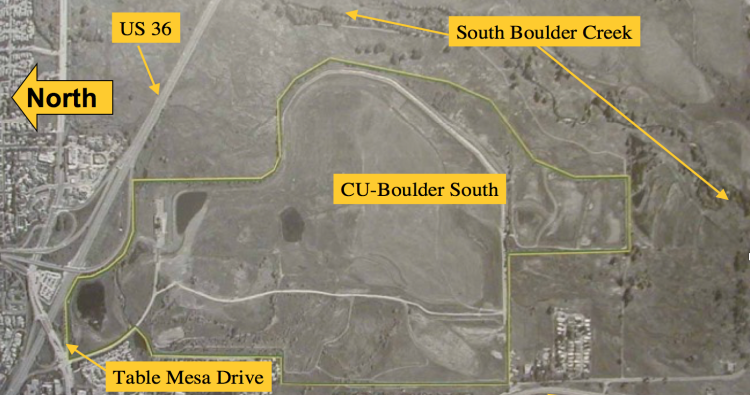CU South future topic of city-hosted open house next week
The University of Colorado Boulder is in discussion with the city of Boulder about the possible annexation of a parcel of land south of the city that could provide CU Boulder with opportunities for long-term growth while aiding the city with flood mitigation efforts.

On Monday, city and county officials will host an open house about the ongoing land-use analysis of the CU South property as part of the Boulder Valley Comprehensive Plan update. The event is part of a comprehensive public engagement process that will involve several advisory boards, elected officials, stakeholder groups and community members.
For more than a year, discussions have centered on whether the city should annex the CU South property, which consists of some 308 acres south of the Regional Transportation District’s Table Mesa Park-n-Ride in unincorporated Boulder County.
The city and its consultants are working on an ecological study and transportation access analysis that will form part of an overall development and conservation suitability report. The city posted early draft reports on its website last week and presented them to its Open Board of Trustees and Planning Board.
CU Boulder purchased the CU South land in 1996 and has no specific long-term plans for its development at this time. In the short run, the university is considering projects to improve facilities for existing tennis courts, creating more playing fields and exploring green-energy initiatives.
In addition, the university is committed to partnering with the city on flood mitigation and improving safety in nearby neighborhoods, said CU Boulder Real Estate Director Jeff Lipton.
“We are ready to contribute as many as 79 acres of land that the city can use to help protect residents from South Boulder Creek flooding,” Lipton said.
Among the possible long-term uses for the property is the development of workforce housing for CU Boulder faculty and staff if that were to meet the needs of employees and align with the university’s strategic plans. To gain a better understanding of the issue, the university expects to conduct a faculty and staff housing survey later this year, with results expected sometime next spring.


